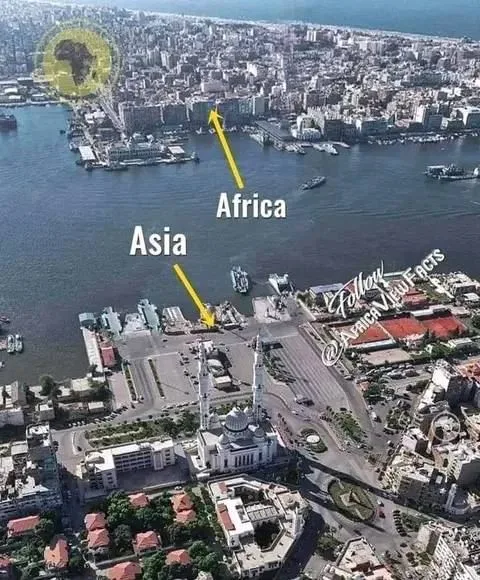In a world where geographical boundaries often define nations, Egypt stands out as a fascinating example of a transcontinental country. While the vast majority of its landmass lies in North Africa, the strategically vital Sinai Peninsula extends into Southwest Asia. A testament to this unique positioning are the twin Egyptian cities of Port Said and Port Fuad, which sit opposite each other at the northern entrance of the Suez Canal, literally embodying Egypt’s presence on two continents.

Port Said: The African Gateway
Located on the western bank of the Suez Canal, Port Said is a major Egyptian port city situated firmly on African soil. Established in 1859 during the construction of the Suez Canal, it has historically served as a crucial gateway for trade and maritime traffic between the East and West. Its bustling harbor, vibrant markets, and distinct colonial-era architecture reflect its long history as an international hub on the African continent.
Port Fuad: The Asian Outpost
Just a short ferry ride across the Suez Canal lies Port Fuad, an Egyptian city located on the eastern bank, within the Sinai Peninsula. Geographically, this places Port Fuad on the Asian continent. Founded later than its twin city, primarily to house the Suez Canal Authority employees and support the canal’s operations, Port Fuad has a more planned and modern layout. Despite its proximity and strong connection to Port Said, its location east of the canal firmly roots it in Asia.
The Suez Canal: A Continental Divide
The Suez Canal itself acts as the natural and widely recognized boundary separating the continents of Africa and Asia in this region. This man-made waterway, completed in 1869, dramatically shortened sea routes between Europe and Asia, transforming global trade. It also cemented Egypt’s transcontinental status, with the canal serving as a visible and crucial dividing line between its African and Asian territories.
The existence of Port Said in Africa and Port Fuad in Asia, intimately linked and functioning as a single metropolitan area, provides a tangible and compelling illustration of Egypt’s unique geographical identity. It’s a living example of how a single nation can straddle two major continents, playing a pivotal role in the connectivity between them. This geographical reality has profoundly shaped Egypt’s history, culture, and strategic importance on the global stage.
Beyond these two cities, the entire Sinai Peninsula, with its rich history, stunning landscapes, and strategic significance, represents Egypt’s enduring presence in Asia. From the ancient Bedouin tribes to its role in modern geopolitics, the Sinai is an integral part of the Egyptian nation, further solidifying its claim as a truly transcontinental country. The tale of Port Said and Port Fuad is just one fascinating facet of this broader geographical reality, highlighting the intricate ways in which human settlements and political boundaries intersect with the natural divisions of our world.


